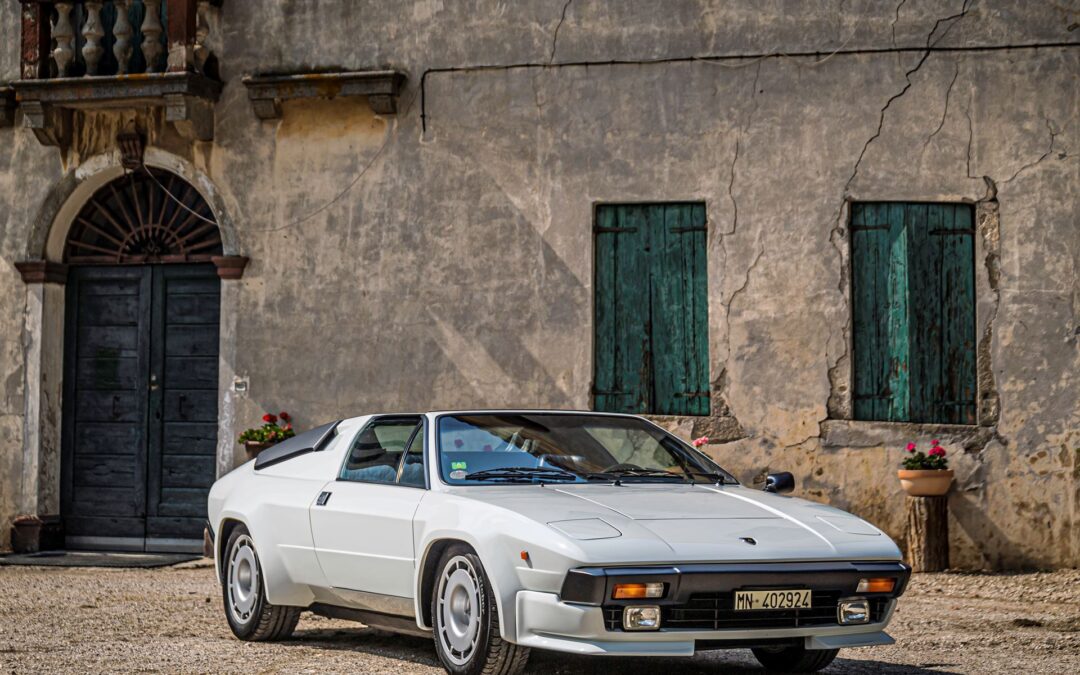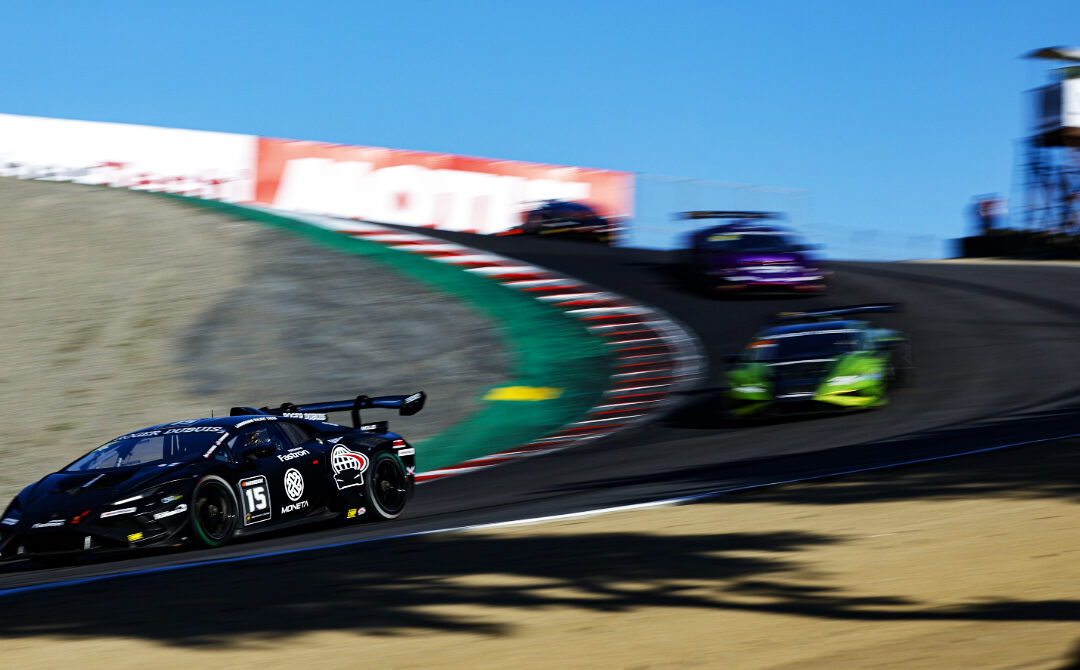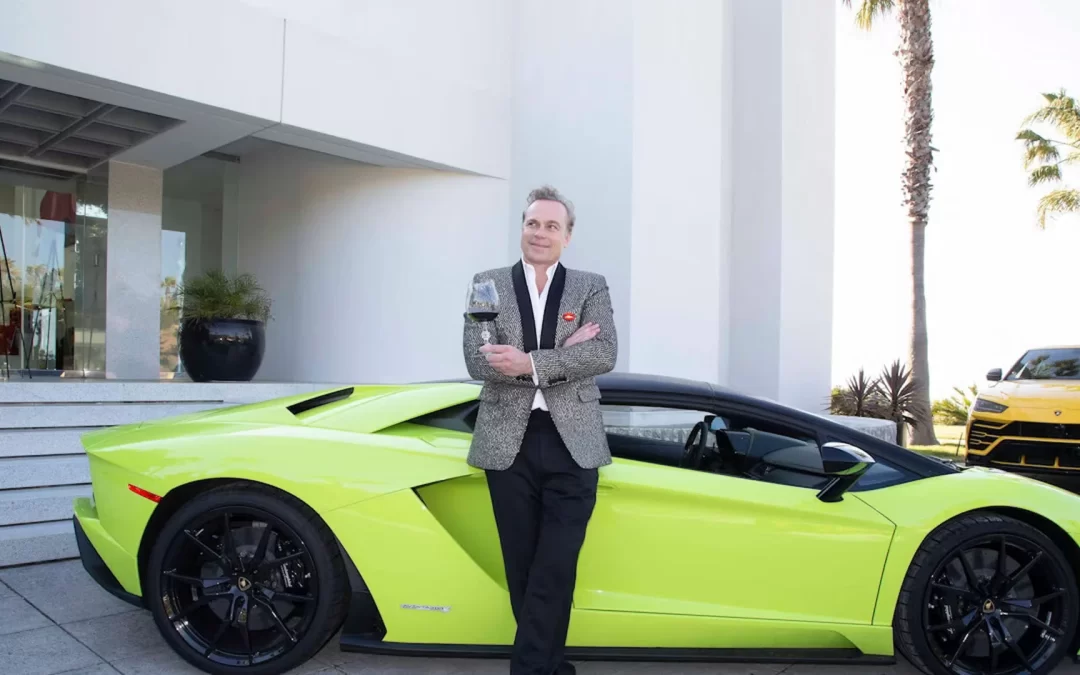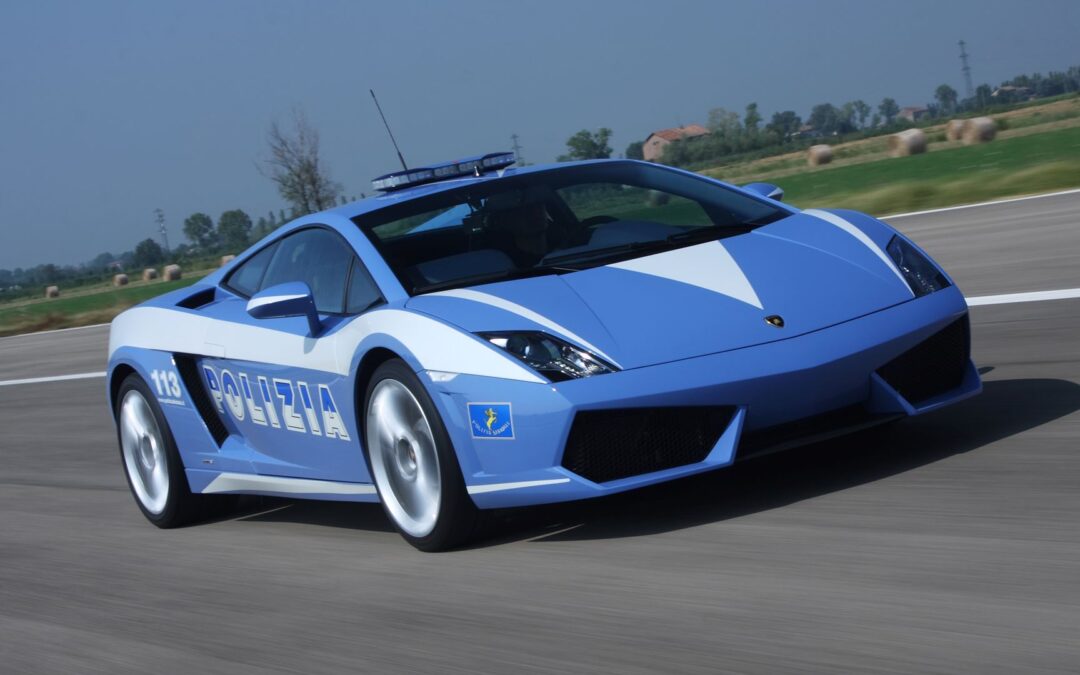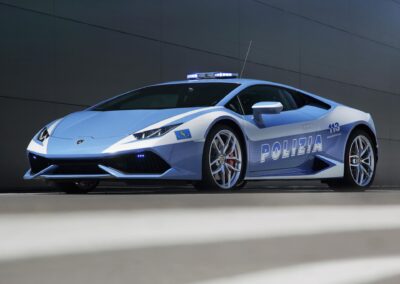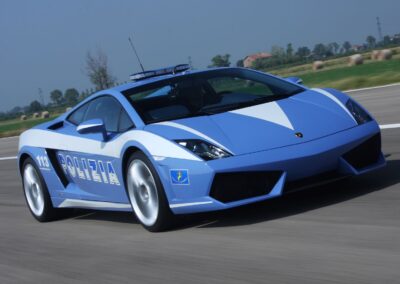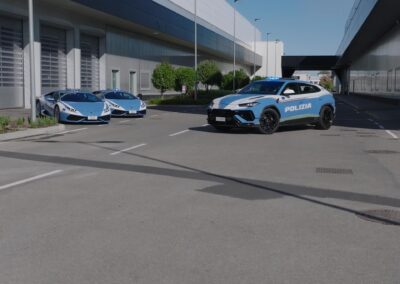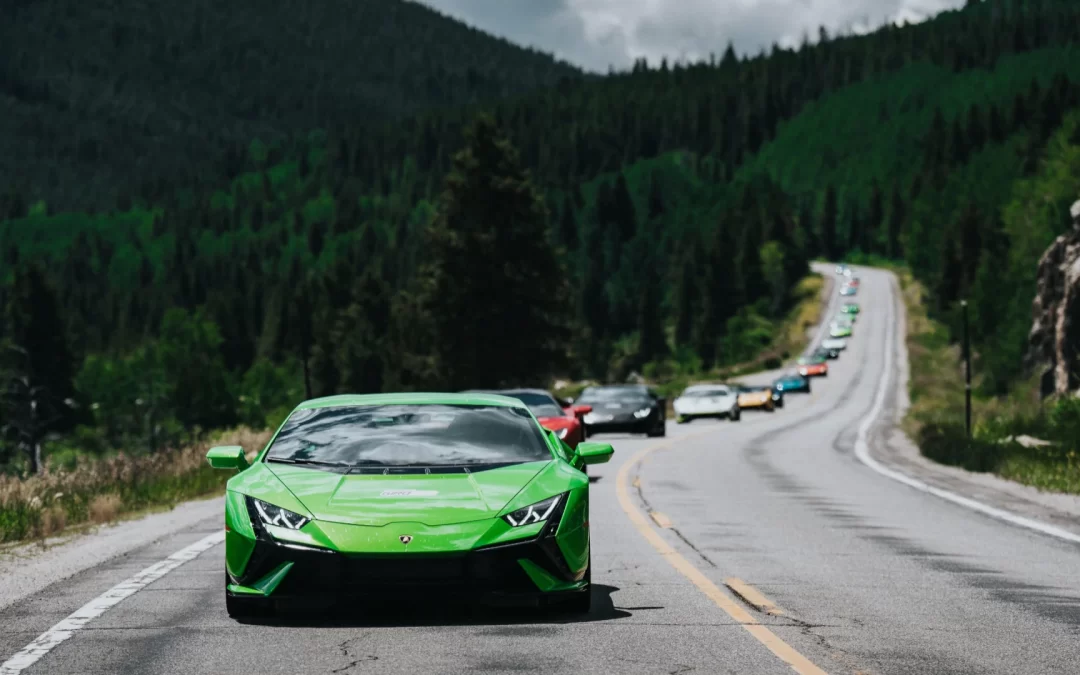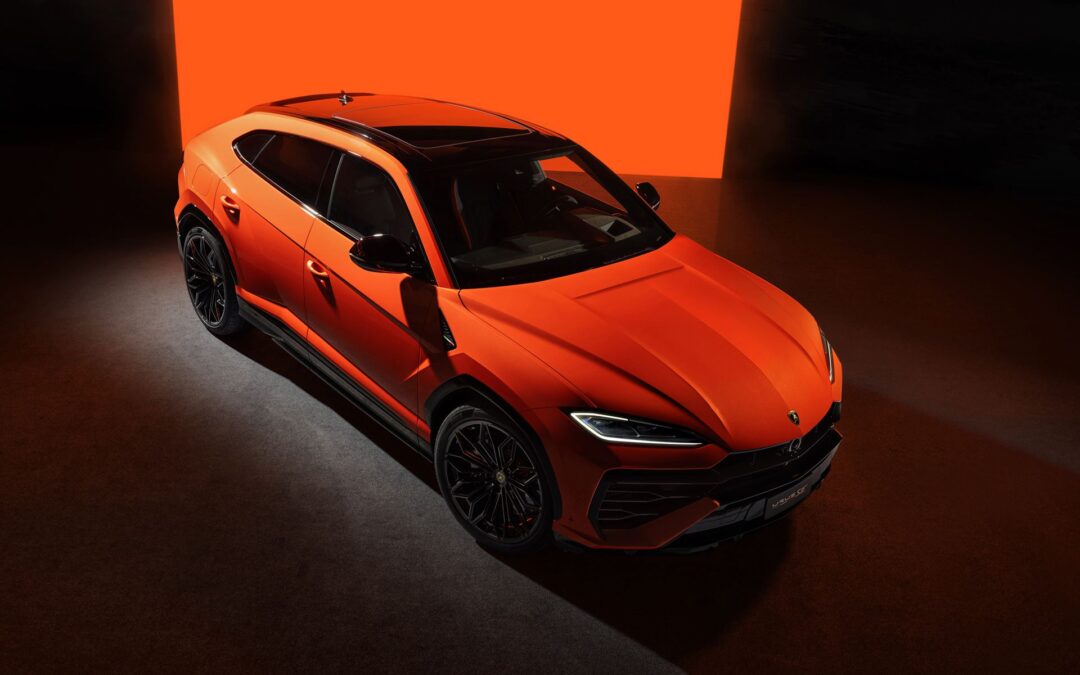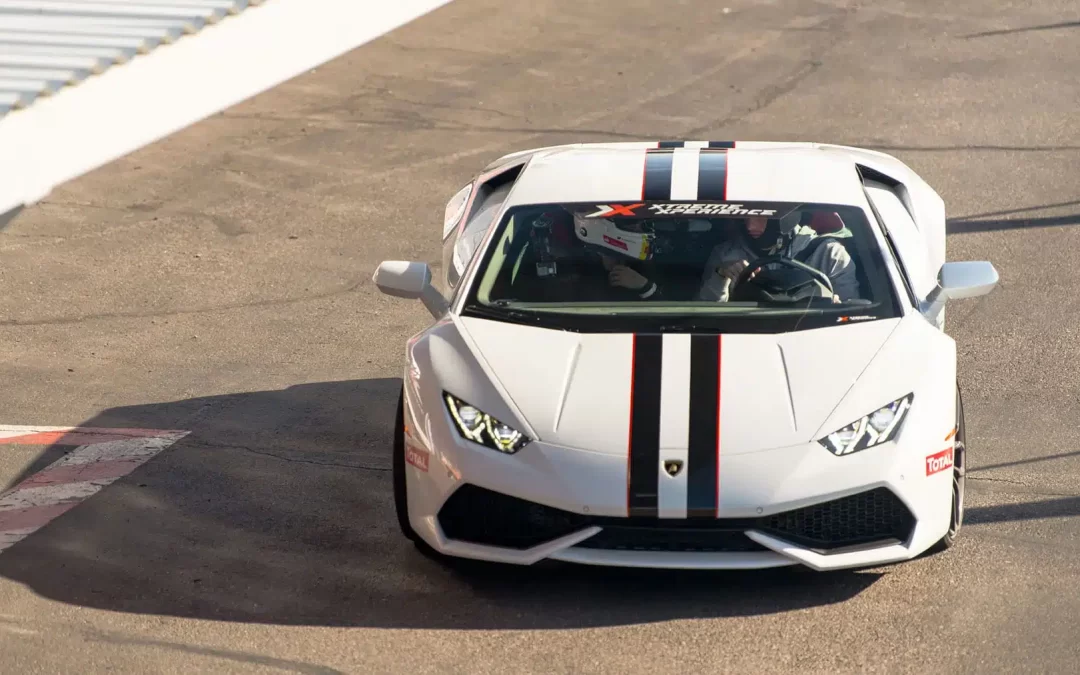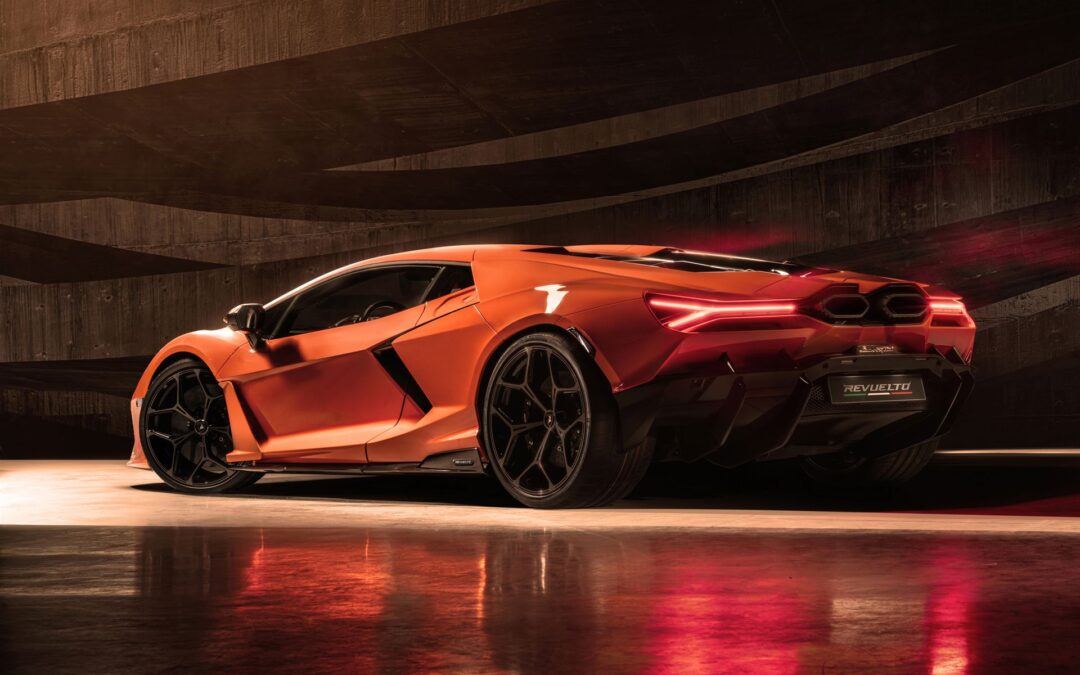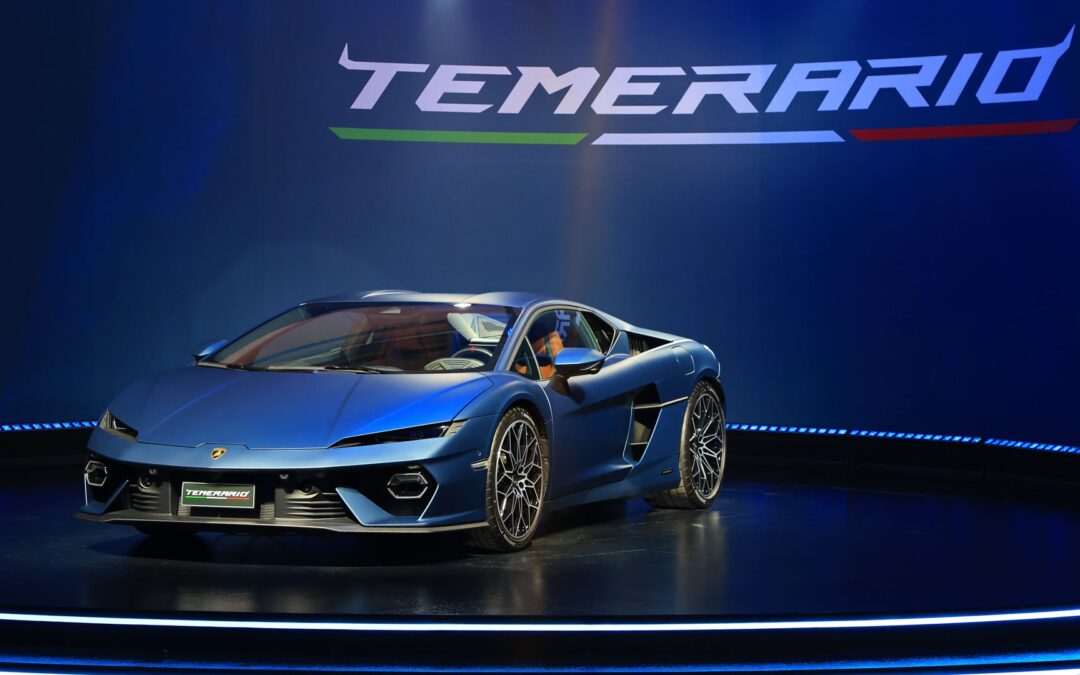
by Lamborghini Fan 1 | Feb 21, 2025 | Vintage / History
Lamborghini. The name evokes images of raging bulls, scissor doors, and screaming V12s. But nestled amongst these legendary beasts lies a lesser-known gem, a car that represented a different path for the Italian marque: the Lamborghini Jalpa. This often-overlooked model, with its targa top and V8 engine, offered a more accessible and, dare we say, practical Lamborghini experience.
Born in the 1980s, the Jalpa was intended to be Lamborghini’s entry-level model, a rival to the Ferrari 308 and Porsche 911. It was a departure from the extreme, often impractical nature of its V12 siblings, offering a blend of performance and usability that broadened Lamborghini’s appeal. Designed by Bertone, the Jalpa sported a clean, angular design that was very much of its time. While it shared some design cues with the Countach, it possessed a more restrained elegance, a subtle aggression that hinted at its performance potential.
Under the hood, or rather, behind the driver, resided a 3.5-liter V8 engine. This smaller displacement engine, while less potent than the V12s found in other Lamborghinis, still provided a thrilling driving experience. Around 255 horsepower propelled the Jalpa with surprising agility, and the car’s relatively light weight contributed to its nimble handling. It wasn’t just about straight-line speed; the Jalpa was a car that encouraged driver involvement, a machine that felt alive in your hands.
The Jalpa’s targa top added another dimension to the driving experience. With the roof panel removed, the open-air sensation heightened the connection to the road and the engine’s throaty roar. It was a car that could be enjoyed on a sunny afternoon cruise as much as it could be pushed to its limits on a winding road.
Inside, the Jalpa’s cabin was functional and driver-focused. Leather seats, a simple dashboard layout, and a three-spoke steering wheel created a classic sports car ambiance. While not as luxurious as some of its contemporaries, the Jalpa’s interior prioritized the driving experience, putting everything the driver needed within easy reach.
Despite its merits, the Jalpa’s production run was relatively short, lasting from 1981 to 1988. It faced stiff competition from its rivals and struggled to find its place in the Lamborghini lineup. Ultimately, only around 410 examples were ever produced, making it a rare and sought-after car today.
The Jalpa may not be as famous as the Countach or the Miura, but it holds a unique place in Lamborghini’s history. It represents a time when the company dared to explore a different path, offering a more accessible and practical supercar. It’s a reminder that Lamborghini isn’t just about extreme performance; it’s also about the passion for driving, the thrill of the open road, and the joy of connecting with a machine. The Jalpa might be the forgotten Lamborghini, but its legacy lives on, a testament to the company’s diverse and enduring spirit.

by Lamborghini Fan 1 | Feb 21, 2025 | Modern, Motorsports, Super Trofeo NA
Lamborghini owners possess a passion for their cars and the thrill of driving. However, transitioning from enthusiastic owner to competitive racer requires dedication, training, and the right support. World Speed Motorsports, based at Sonoma Raceway, offers a streamlined pathway to transform that passion into a reality, guiding drivers from track day novices to seasoned IMSA competitors.
The journey begins with assessing the driver’s current skill level. Whether you’re a complete beginner or a track day veteran, World Speed tailors its program to meet your specific needs. For those new to racing, the process starts with foundational training in FIA F4 race cars. These nimble machines provide an ideal platform to learn essential racecraft, car control, and track awareness. World Speed’s experienced instructors work closely with drivers, honing their skills and preparing them for the intensity of wheel-to-wheel competition.
Concurrently with F4 training, drivers begin testing in World Speed’s Lamborghini Super Trofeo Huracán. This allows them to acclimate to the power and handling dynamics of the Lamborghini race car, bridging the gap between training and the ultimate goal of Super Trofeo competition. This dual approach ensures a well-rounded development process, fostering both fundamental skills and specialized knowledge for the Lamborghini platform.
A crucial step in the process is securing a provisional competition license. World Speed assists drivers in navigating the licensing process, ensuring they meet all the necessary requirements to compete. Once licensed, drivers gain valuable experience through actual F4 races, further refining their racecraft and building confidence in a competitive environment.
The Lamborghini Super Trofeo series offers a dedicated LB Cup class for non-professional drivers who are new to racing but have earned their competition license. This class provides a level playing field for aspiring racers, allowing them to compete against others with similar experience levels. With the comprehensive training provided by World Speed, drivers can quickly progress through the ranks and find themselves contending for podium finishes.
World Speed’s program is designed to accelerate the transition from Lamborghini owner to factory-supported racer. By combining foundational training in F4 cars, extensive testing in the Super Trofeo Huracán, and participation in actual races, drivers gain the skills and experience necessary to compete at the highest levels. The team’s support extends beyond on-track training, encompassing guidance on licensing, race strategy, and networking within the racing community. This holistic approach provides aspiring racers with the tools they need to succeed, turning their dreams of racing a Lamborghini into a tangible reality.
Learn more about getting started in racing:
https://worldspeed.com/drivers/

by Lamborghini Fan 1 | Feb 21, 2025 | Etcetera, Modern, Vintage / History
Napa Valley, renowned for its exquisite wines and breathtaking scenery, is about to become the backdrop for a new kind of celebration: the inaugural JCB Rally. This exclusive event, spearheaded by Jean-Charles Boisset in partnership with the Napa Valley Car Club, promises a thrilling blend of luxury, speed, and style.
Kicking off at the Napa Valley Car Club’s newly unveiled Car Barn in downtown Napa, the JCB Rally invites participants to embark on an unforgettable journey behind the wheels of exotic cars. Imagine cruising through the picturesque landscapes of Napa Valley, the roar of a high-performance engine echoing through the vineyards.
The rally begins with a touch of elegance, featuring a stop at the iconic Oakville Grocery. Participants will indulge in coffee and pastries, fueling up for the scenic drive ahead. From there, the caravan of automotive masterpieces will wind its way through Napa’s most stunning routes, offering drivers and passengers alike a unique perspective on the valley’s beauty.
The excitement culminates back at the Car Barn, where the celebration continues with a sophisticated champagne and caviar reception. This post-rally gathering provides an opportunity for participants to share their driving experiences, admire the impressive collection of cars, and network with fellow enthusiasts.
As an added bonus, participation in the JCB Rally includes a ticket to the Car Barn’s Anniversary Party later that evening. This exclusive after-party promises to be a memorable celebration, extending the day’s festivities into the night.
The JCB Rally is more than just a drive; it’s an experience. It’s a chance to indulge in the finer things in life – high-performance cars, exquisite food and drink, and the camaraderie of fellow enthusiasts – all set against the stunning backdrop of Napa Valley. Mark your calendars and prepare for an unforgettable adventure.
More information:
https://www.exploretock.com/jcbsthelena/event/532006/jcb-collector-rally

by Lamborghini Fan 1 | Feb 21, 2025 | Modern, Recent Models, Vintage / History
For two decades, a unique partnership has been quietly working to protect and serve the citizens of Italy. Since 2004, Automobili Lamborghini and the Italian “Polizia di Stato” have joined forces, combining cutting-edge technology, a shared commitment to safety, and a touch of Italian flair. It’s a collaboration that has not only put high-performance vehicles into the hands of law enforcement but has also made a tangible difference in countless lives.
The story began with the delivery of a Lamborghini Gallardo, a symbol of Italian engineering excellence, pressed into service for the Polizia di Stato. This wasn’t just a publicity stunt; it was the start of a long and fruitful relationship. Over the past 20 years, Lamborghini has provided a succession of high-performance vehicles, each one a valuable tool for patrolling Italy’s roads and responding to emergencies.
These aren’t just show cars. They are actively used in the line of duty. Perhaps the most impactful role these Lamborghinis play is in organ transport. To date, these specially equipped vehicles have completed over 200 such missions across Italy, often making the difference between life and death. The speed and reliability of these supercars are crucial in these time-sensitive operations.
Beyond emergency response, the Lamborghini-Polizia di Stato partnership extends to road safety education. These eye-catching vehicles have been featured in more than 1,500 events designed to promote safe driving practices and instill a culture of responsibility on the road. It’s a proactive approach, using the allure of these incredible machines to engage with the public and promote positive change.
“We are extremely proud to celebrate 20 years of collaboration with the Italian State Police, an institution we deeply respect for its daily work protecting the safety of Italian citizens,” stated Stephan Winkelmann, Chairman and CEO of Automobili Lamborghini. “Knowing that our vehicles have supported the police in their road operations and have contributed to saving lives is greatly gratifying. This cooperation represents the strong bond between Automobili Lamborghini and Italy and its institutions, despite our international outlook.”
Prefect Vittorio Pisani, Chief of Police – Director General of Public Security, echoed this sentiment: “The 20-year synergy with Automobili Lamborghini reinforces the Italian State Police’s commitment to fulfilling a delicate task such as urgent organ transport, an activity carried out in close collaboration with the National Transplant Centre. This helps to make one of the missions of the Polizia di Stato increasingly tangible, namely being of service to all citizens. The Lamborghinis in use, from the Gallardo to the most recent Urus, allow us to rely on cutting-edge equipment and technology, ensuring our specially trained drivers can carry out this vital service quickly and with maximum safety.”
Over the past two decades, six different Lamborghini models have joined the Polizia di Stato fleet, each one boasting specific characteristics and advanced technologies tailored to the demands of law enforcement and emergency response. This partnership is more than just a vehicle donation; it’s a testament to the power of collaboration, a commitment to public service, and a symbol of Italian pride. It’s a story of technology, safety, and civic commitment, driven by the passion and innovation that defines both Lamborghini and the Polizia di Stato.

by Lamborghini Fan 1 | Feb 21, 2025 | Etcetera, Modern
Lamborghini invites you to embark on an unforgettable driving adventure through the heart of New England. The Esperienza Giro isn’t just a road trip; it’s a curated experience, blending the thrill of driving a Lamborghini with the charm of New England’s picturesque landscapes and luxurious accommodations. For $30,000, you and a guest can immerse yourselves in this exclusive event.
Imagine carving through the winding mountain passes of New Hampshire, the roar of your Lamborghini echoing through the trees. Picture yourself cruising along the scenic backroads of Lake Placid, the sun glinting off the pristine waters. This is the promise of the Esperienza Giro. The carefully planned routes will take you through Vermont’s quaint villages and along Maine’s rugged coastline, offering a diverse tapestry of driving experiences and breathtaking vistas.
This isn’t just about the drive, however. Lamborghini has curated a complete luxury experience. You’ll be treated to premium accommodations and amenities, ensuring comfort and relaxation after a day of exhilarating driving. Thoughtfully curated dining experiences, reflective of the local cuisine, will tantalize your taste buds and provide a true taste of New England.
The Esperienza Giro package covers all the essentials, including airport transfers from Adirondack Regional Airport (SLK). While personal travel arrangements and transportation of your own vehicle are not included, the focus is on providing a seamless and luxurious experience once you arrive. The package price of $30,000 covers two guests sharing a hotel room.
This is a rare opportunity to experience New England in a way few others can. Spots are limited for this exclusive event, available on a first-come, first-served basis. If you’re ready to combine your passion for driving with a taste of New England’s beauty and charm, the Lamborghini Esperienza Giro awaits.
More information: https://eventsala.com/products/esperienza-giro-2025

by Lamborghini Fan 1 | Feb 21, 2025 | Modern, Recent Models, Sedans / SUVs
Lamborghini has officially entered the plug-in hybrid arena with the unveiling of the Urus SE, the first electrified version of their Super SUV. The Urus SE represents a significant step in Lamborghini’s “Direzione Cor Tauri” electrification strategy, following the launch of the Revuelto hybrid supercar.
This isn’t just a mild hybrid; the Urus SE is a full-fledged PHEV, boasting what Lamborghini calls a “two hearts” powertrain. The combination of the internal combustion engine and electric motor(s) results in the highest torque and power figures ever seen in the Urus lineup, placing it in a unique position within its competitive set. While specific details remain under wraps, Lamborghini is promising an impressive 800 CV (likely around 789 horsepower) and a substantial reduction in emissions – a claimed 80% improvement.
Beyond the powertrain, the Urus SE sports a refreshed design, optimized aerodynamics, and what Lamborghini describes as “unprecedented on-board technology.” While the specifics of these updates are yet to be fully disclosed, the implication is a more refined and technologically advanced Urus experience. Lamborghini is also emphasizing improvements in comfort, performance, efficiency, emissions, and, crucially, driving pleasure. They suggest the SE surpasses the existing Urus S model in all these key areas.
“With the Urus we changed the paradigms of the SUV world, ushering in a new segment,” commented Stephan Winkelmann, Lamborghini Chairman & CEO. “In just a few years, the Urus has become our brand’s bestseller, enabling Lamborghini to attract new customers and strengthen its position in the most important markets. With the Urus SE, we’ve taken another step towards the future in line with our Direzione Cor Tauri strategy, moving ahead with the electrification of the range and the path toward decarbonization that began with the introduction of the Revuelto super sports car in March 2023.”
The Urus SE marks a pivotal moment for Lamborghini. It’s not just about adding an electric motor; it’s about reimagining the Urus experience. The promise of significantly increased power and torque, coupled with improved efficiency and reduced emissions, suggests that the SE could be the most compelling Urus yet. As more details emerge from the Beijing show, we’ll have a clearer picture of just how dramatically Lamborghini has electrified its Super SUV. One thing is certain: the raging bull is going electric, and the automotive world is watching.

by Lamborghini Fan 1 | Feb 21, 2025 | Etcetera, Modern, Recent Models
Want to experience the raw power and precision of a Lamborghini Huracán LP610-4? Dream of carving through corners with the finesse of a pro driver? The Xtreme Experience offers more than just a glimpse; they offer the chance to truly drive this supercar icon. Forget a leisurely Sunday drive – this is about pushing your limits and discovering what you and this incredible machine are capable of.
The Xtreme Experience isn’t just about handing you the keys and saying, “Have fun.” They offer a structured racing school experience designed to elevate your driving skills and give you the confidence to handle the Huracán’s ferocious performance. Imagine stepping into the cockpit, the roar of the V10 engine reverberating through your chest, and knowing you’re about to receive expert guidance from seasoned instructors.
The program typically begins with classroom instruction, covering essential racing techniques like proper braking, corner entry and exit strategies, and the importance of weight transfer. You’ll learn the nuances of the Huracán’s handling dynamics, understanding how to maximize its all-wheel-drive grip and exploit its razor-sharp responsiveness. This isn’t just theory; it’s the foundation upon which your on-track experience will be built.
Then comes the moment you’ve been waiting for: strapping into the driver’s seat. With an instructor by your side, you’ll take to the track, gradually increasing your speed and applying the techniques you’ve learned. The instructor provides real-time feedback, coaching you on your lines, braking points, and throttle control. They’ll help you understand how to read the track, anticipate upcoming corners, and find the optimal rhythm for smooth, fast laps.
The Lamborghini Huracán LP610-4 is a beast of a machine, but under the guidance of The Xtreme Experience’s instructors, it becomes an exhilarating and rewarding partner. You’ll feel the surge of acceleration as you power out of corners, the car’s precise handling as you navigate chicanes, and the incredible stopping power as you brake late and deep. It’s an adrenaline rush unlike any other, a chance to truly connect with the car and experience the thrill of high-performance driving.
The Xtreme Experience offers different program levels, allowing you to tailor your experience to your skill and comfort level. Whether you’re a seasoned driver looking to refine your technique or a newcomer eager to explore the world of high-performance driving, they have a program designed for you.
More than just a supercar rental, The Xtreme Experience offers an immersive driving experience. It’s an opportunity to learn from the best, push your boundaries, and create memories that will last a lifetime. If you’ve ever dreamed of taming a Lamborghini Huracán LP610-4, this is your chance. This isn’t just driving; it’s an education in speed.
More Info: https://www.thextremexperience.com/

by Lamborghini Fan 1 | Feb 21, 2025 | Modern, Recent Models
Lamborghini has dropped a bombshell to celebrate its 60th anniversary: the Revuelto, the brand’s first High Performance Electrified Vehicle (HPEV). This isn’t just a hybrid; it’s a paradigm shift, a 1015-HP monster that marries a naturally aspirated V12 with not one, but three electric motors. Forget what you thought you knew about super sports cars. This is the future.
The heart of the beast remains a V12, but it’s a completely new 6.5-liter unit churning out 127 HP per liter. That’s just the beginning. Two axial flux electric motors at the front and a radial flux motor integrated with the eight-speed double-clutch gearbox (a first for a Lamborghini 12-cylinder) bring the thunder to a combined crescendo of 1015 HP. Yes, you read that right. One thousand and fifteen horsepower.
This isn’t some mild-hybrid compromise. A high specific power lithium-ion battery pack (4500 W/kg, if you’re counting) allows for a fully electric driving mode. Imagine silently stalking through city streets, then unleashing the V12’s primal scream on the open road. Lamborghini promises 13 drive modes, ensuring the Revuelto is ready for any occasion, from civilized cruising to all-out track attacks. And yes, all-wheel drive is available even in EV mode.
Lamborghini hasn’t just bolted on some electric motors and called it a day. The Revuelto’s architecture is revolutionary. A new carbon fiber frame forms the backbone of the car, promising rigidity and lightness. The aerodynamics are a masterclass in form following function, with every line and curve designed to maximize efficiency and downforce. This isn’t just a pretty face; it’s a weapon honed for speed.
Inside, the Revuelto features a new Lamborghini Infotainment System, promising a fully immersive experience for both driver and passenger. While details are still emerging, expect cutting-edge technology and a driver-focused cockpit.
“The new Revuelto is a milestone in the history of Lamborghini, and an important pillar in our Direzione Cor Tauri electrification strategy,” says Stephan Winkelmann, Lamborghini Chairman and CEO. “It is a unique and innovative car but at the same time faithful to our DNA: the V12 is an iconic symbol of our super sports heritage and history. Revuelto was born to break the mold, combining a new 12-cylinder engine with hybrid technology, creating the perfect balance between delivering the emotion that our clients want with the necessity to reduce emissions.”
The Revuelto isn’t just an evolution; it’s a revolution. It’s a testament to Lamborghini’s commitment to pushing boundaries and redefining what’s possible in the world of super sports cars. The future is here, and it’s electrified. And it’s packing 1015 HP.

by Lamborghini Fan 1 | Feb 21, 2025 | Modern, Recent Models
Carmel-by-the-Sea, CA – Lamborghini just dropped a bombshell on Monterey Car Week, unveiling the Temerario, its new twin-turbo V8 hybrid supercar. This Huracán successor isn’t just a replacement; it’s a quantum leap, packing a combined 920 CV and screaming all the way to a 10,000-rpm redline—a production car first. Top speed? Over 210 mph. Zero to 62 mph? A blistering 2.7 seconds. Consider the bar officially raised.
Stephan Winkelmann, Lamborghini’s CEO, minced no words: “Every new Lamborghini must surpass its forerunners.” The Temerario does just that, pushing the boundaries of performance, sportiness, and driving pleasure. This plug-in hybrid marks the second Lamborghini HPEV (High Performance Electrified Vehicle) and completes the hybridization of the entire lineup, following the Revuelto and Urus SE.
The Temerario’s heart is a groundbreaking twin-turbo V8 hybrid, a masterpiece of engineering that allows it to rev to an ear-splitting 10,000 rpm. “With the Temerario, we’ve exceeded our expectations,” Winkelmann proclaimed. “It completes the next chapter in our Direzione Cor Tauri plan by hybridizing the full product line.”
The Temerario shared the Monterey stage with its hybrid siblings: the 1,015-CV, 217-mph Revuelto with its naturally aspirated V12, and the 800-CV, 194-mph Urus SE super SUV. Lamborghini made it clear: hybridization isn’t a compromise; it’s an enhancement.
Even the digital world got a taste of the Temerario. It debuted in the Lamborghini Lab on Roblox, letting users customize their dream Temerario and unleash it on the virtual track.
While the Temerario isn’t on sale just yet (fuel consumption and emissions data are still pending approval), its presence at Monterey Car Week sent a clear message: Lamborghini is charging full speed into the electrified future, and the Temerario is leading the charge.
